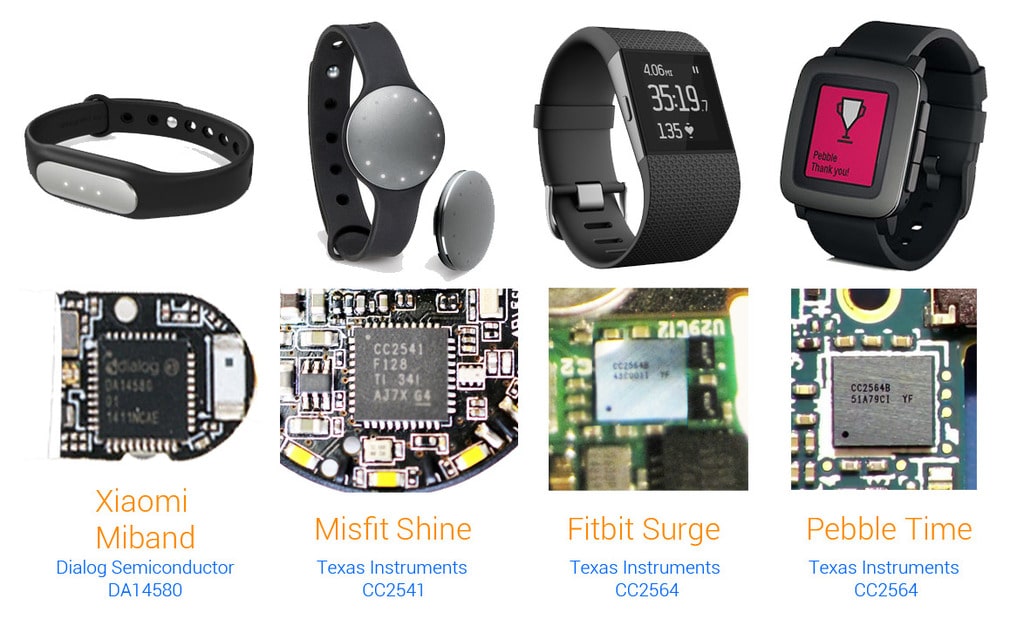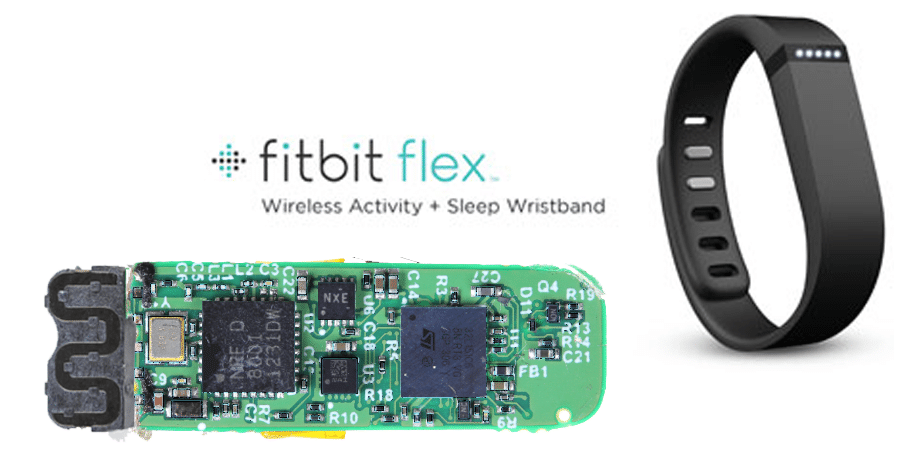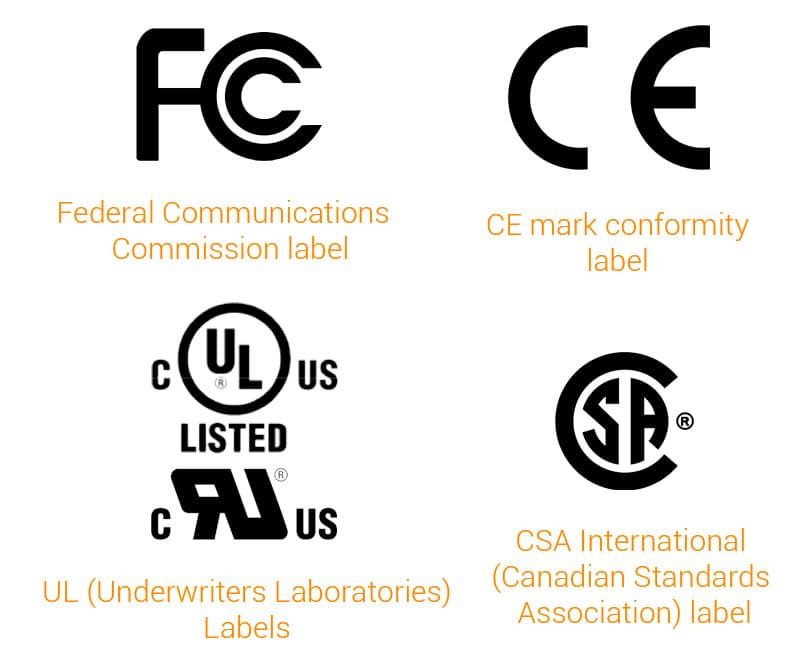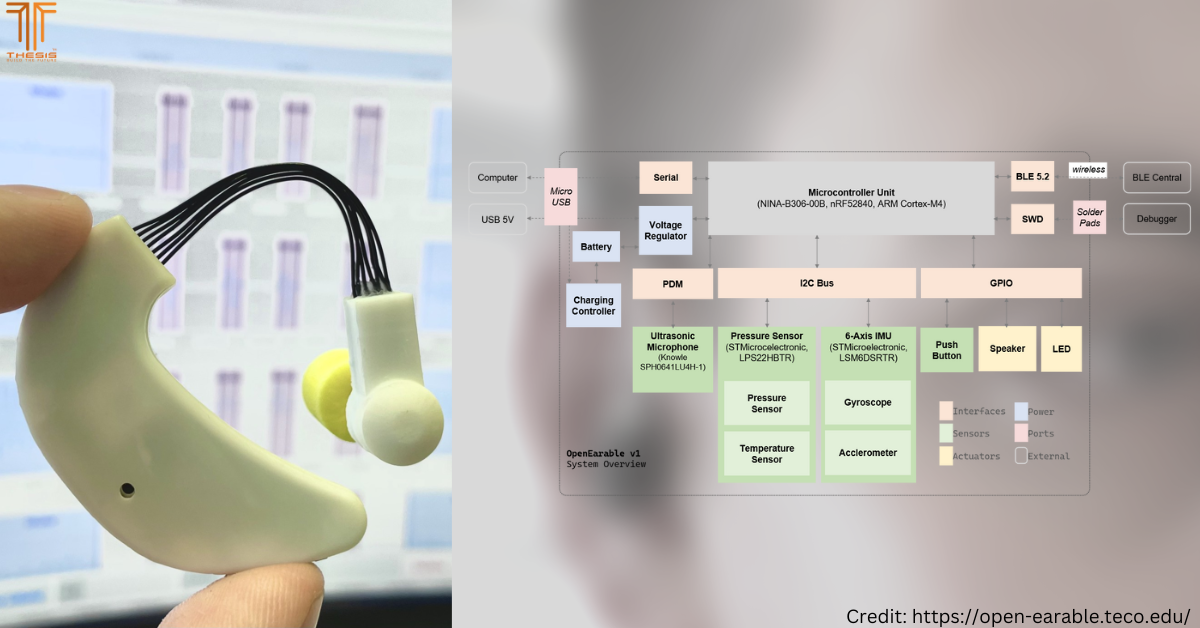
An even smarter Bluetooth
You’re likely to own a Bluetooth-enabled device by now – your phone is one. Bluetooth-enabled connectivity exists in a variety of consumer electronics and has become a socially understood means of convenient wireless communications.
Bluetooth capability can be found in almost every decent smartphone, tablet, wireless mp3 speaker and in-vehicle entertainment system to even household appliances like a rice cooker or refrigerator.
However, did you know that there are many versions of Bluetooth? Since its inception, Bluetooth has been a wireless technology standard for exchanging data over short distances via small Personal Area Networks (PANs) and it has evolved over the years with newer functionality and capabilities that consumers know little about.
Bluetooth has now evolved to Bluetooth 4.0 standards and beyond - also known as Bluetooth Low Energy (BLE4.0), Bluetooth® Smart or simply “BLE” or BLE4.0.
Bluetooth Smart Technology: Powering the Internet of Things
As consumers demand longer battery life from their mobile devices and the power efficiency of communication modules has come under scrutiny, a device with Bluetooth connected all day will undoubtedly lead to a decrease in battery life. Bluetooth® Smart is the intelligent, power-friendly version of Bluetooth wireless technology.
Bluetooth® Smart is a new generation of Bluetooth connectivity with enhanced power efficiencies targeted at mobile battery-powered applications, yet retaining its ability to be backwards-compatible with all other versions of legacy Bluetooth. You can pair existing Bluetooth headsets with a new smartphone or tablet you already own or new Bluetooth headsets with older mobile devices.

Now, because of BLE, consumers are seeing everyday objects featuring Bluetooth connectivity. Developers are attempting to make devices “smart” by incorporating Bluetooth, and today we start to see smart locks such as SKYLOCK and Noke lock marketed with BLE-enabled features.

New applications have also been made possible with BLE. Ever forgotten where you placed your keys at home? Tile is one such product targeted at short-distance location-tracking. Consumer reaction has been somewhat lukewarm, but that hasn’t stopped similar products from popping up, such as Lupo, Pebblebee, Hipkey and XYfindit just to name a few.

With BLE’s ability to connect to smartphone apps seamlessly; developers and sports and fitness companies are empowered to integrate this new technology. The market is now seeing a wide range of devices such as Bluetooth-connected heart-rate monitors, clothing and even running footwear.
What does this mean?
The world is exploding with an incredible array of devices connected via BLE. Everyday appliances and devices can now be seamlessly connected to a control device – the most ubiquitous is your smartphone and this development is accelerating the growth of the Internet of things (IoT).
Research companies Cisco, Texas instruments and ABI Research project that some 30 billion to 50 billion devices will enter into the IoT ecosystem by 2020. What this means is that IoT will have a tremendous impact on businesses, consumers and everyday life.
These newly connected devices will produce new types of data that will, in turn, produce new information and knowledge that enable a gain in business efficiencies and enhance customer and consumer satisfaction. IoT will also have a profound impact on people’s lives. It will improve public safety, transport, and healthcare with better information and faster access to this information.
Imagine waking up for a run listening to music with headphones that monitor your heart rate and pace. Your smart-toothbrush will have sensors and algorithms that monitor the state of your dental health. These Bluetooth-connected devices are targeted at reducing wire clutter while allowing you to benefit from the convenience, empowerment, and freedom of BLE technology.
Developing with Bluetooth Smart
As a developer, Bluetooth® Smart is a powerful technology enabler limited only by your imagination and creativity. What are the advantages of BLE over legacy Bluetooth 2.0?
- Reduced power consumption - BLE4.0’s Ultra-low peak, average and idle mode power consumption consumes half as much energy when active and transmitting, and 1/100th the energy when in sleep mode. This means longer battery life for mobile devices with an ability to operate for months or years on standard coin-cell batteries. In many cases, it makes it possible to operate these devices for more than a year without recharging.
- Enhanced range - The majority of Bluetooth devices on the market today include the basic - 10m range of the Classic Bluetooth radio, but there is no limit imposed with BLE. Manufacturers may choose to optimize a range of 50m and beyond, particularly for in-home sensor applications where a longer range is a necessity. Increased modulation index provides a possible range for BLE of over 100m.
- Simplified pairing process - Pairing is now quicker (down to 0.1s instead of 2.0s) and can be done from within an iOS app (instead of having to go through Settings). No complicated handshaking. Just press a button within the app - you’re paired!
- Background operation - Once paired, the Bluetooth device can wake up the mobile device with a pop-up notification or an interrupt, even when the app is in the background.
- Convenient data retrieval - Obtaining data is no longer constrained by the Classic Bluetooth profiles or Apple’s proprietary 32-pin connector and its expensive MFi Program, which in turn results in a shorter, simpler and cheaper development cycle.
- Backward compatibility – BLE allows two types of implementation, dual-mode and single-mode and the resulting architecture shares much of Classic Bluetooth technology's existing radio and functionality resulting in a minimal cost increase compared to Classic Bluetooth technology. Manufacturers can also use current Classic Bluetooth technology (Bluetooth v2.1 + EDR or Bluetooth v3.0 + HS) chips with the new low-energy stack, enhancing the development of Classic Bluetooth-enabled devices with new capabilities.
- Frequency hopping – BLE uses the adaptive frequency hopping common to all versions of Bluetooth technology to minimize interference from other technologies in the 2.4 GHz ISM Band. Efficient multi-path benefits increase the link budgets and range.
- Host control – BLE also places a significant amount of intelligence in the controller, which allows the host to sleep for longer periods of time and be woken up by the controller only when the host needs to perform some action. This allows for the greatest current savings since the host is assumed to consume more power than the controller.
- Low latency - BLE can support connection setup and data transfer as low as 3 milliseconds, allowing an application to form a connection and then transfer authenticated data in a few milliseconds for a short communication burst before quickly tearing down the connection.
- Robustness – BLE uses a strong 24-bit CRC on all packets ensuring the maximum robustness against interference.
- Strong security – Full AES-128 encryption using CCM to provide strong encryption and authentication of data packets.
Common terms discussed amongst developers dabbling in BLE:
- Universally unique identifier (UUID) – UUID is typically a 128-bit identifier standard used in software construction, however, Bluetooth Special Interest Group (SIG) has a set of defined services and descriptors in a 16-bit address specific to Bluetooth. Any value with a UUID can be listed as an attribute which refers to specific Bluetooth services and characteristics.
- Generic Access Profile (GAP) - Controls connections and advertising in Bluetooth. GAP is what makes a device visible to the outside world, and determines how two devices interact with each other. GAP typically defines various roles for devices and identifies which device is ‘central’ and which is peripheral. Peripheral devices are small, low-power, resource-constrained devices that can connect to a much more powerful central device. Examples of peripheral devices are devices like a smartwatch, heart-rate monitor or smart proximity tracking tag. A central device will refer to a smartphone or tablet with more processing power and memory size. More information here.
- Generic Attribute Profile (GATT) – A GATT is a collection of services of the characteristics and relationships to other services that encapsulate the behaviour of part of a device. GATT tables describe how data is exchanged once the device is connected; more information here.
- Services – this refers to what kind of information is being transmitted; is its battery life or heart rate?
- Characteristic/descriptors – this refers to a specific value type, a string value or an integer, or a character, and characteristically contains read/write/notify properties; more information here.
In other words, a GATT holds several services, where the services, in turn, hold several characteristics or descriptors.
What is the difference between Bluetooth, Bluetooth Smart Ready and Bluetooth Smart?
The terminology might seem confusing; let’s simplify it.
Bluetooth Smart Ready: Connects with both Bluetooth Classic & Bluetooth Smart devices and is sometimes called dual-mode. This represents devices with both BLE4.0 and legacy protocols; most new tablets and smartphones are as such. BLE smart ready has the advantage of utilizing classic Bluetooth profiles which have a higher data bandwidth when compared to BLE4.0.
Bluetooth Classic: Used for streaming audio or video to a device (For example a Bluetooth headset), this typically represents older legacy Bluetooth peripherals that are not compatible with BLE4.0-only devices.
Bluetooth Smart: Used for low-energy devices that communicate to smartphones (for Example Apple iBeacon, proximity marketing, and heart rate monitors), these are the new generation of BLE4.0 devices that do not have legacy protocol support.
BLE all around us

Because of this newfound power efficiency and lower cost, the viability of new use cases and applications for Bluetooth that were previously limited have reopened new possibilities.
The battery drain concerns are now largely gone; no longer will Bluetooth be an undermined connection on a mobile device. It will likely become one of the driving forces that will continue to push smartphone innovation along at its current, breakneck pace. Technology manufacturers have embraced the new technology eagerly with Apple first introducing the iPhone4S in 2013 to feature BLE-ready capabilities, and BLE is now standard on most new smartphone entrants to the market.
Because of the major improvements in power consumption, it's easy to see BLE making a big impact on the Bluetooth accessory market and one very prominent wave is in the personal fitness and health market.
Tens of dozens of fitness trackers now available on the market are mostly empowered by a BLE chip. Xiaomi’s MiBand low-cost fitness tracker sold a sensational 6 million units worldwide and is powered by the Dialog Semiconductor DA14580. The DA14580 boasts ultra-low power consumption giving the Mi Band a previously unheard-of battery life of up to 30 days!
Not to be outdone, electronic giant Texas Instruments has a broad portfolio of BLE chip solutions for various applications such as the Microcontroller-BLE CC2541 found in the Misfit Shine, and a newer generation stand-alone Bluetooth controller, the CC2564 is found in Fitbit Surge fitness watch and Pebble Time smartwatches.
Add BLE to your projects today!
In the next few years, the fight for dominance within embedded BLE will continue apace and is, understandably, a concern for developers and manufacturers. As silicon vendors continue to compete for market share, this then brings into question what level of Bluetooth support customers and engineers can expect. 2015 seems to be just the beginning of a battle for market share among vendors like Silicon Laboratories, which recently purchased BLE module manufacturer, Bluegiga Technologies Inc. Not to be outdone, mobile chip-maker Qualcomm giant has acquired UK-based Bluetooth audio solutions provider Cambridge Silicon Radio (CSR), for $2.5 billion!
With these acquisitions, Silicon Laboratories and Qualcomm join current industry leaders like Texas Instruments (TI), Nordic Semiconductor, NXP Semiconductor, Dialog Semiconductor, Cypress Semiconductor, BlueRadio and Broadcom, which are all vying for market share in the IoT.
Today, incorporating BLE connectivity into your device or project is a painless process when using ready-made third-party modules allowing a designer to reduce development time and accelerate time-to-market cycles considerably. In selecting a chip for your project, developers are now spoilt for choice; it is comforting to know that there is an extensive portfolio of BLE solution providers on the market. The type of BLE chipset required depends on your intended application. We've tested several modules, and have selected a few prominent ones for your consideration.
|
Mode |
Integrated Processor |
Flash |
RAM |
Current Consumption (RX/TX) | |
| Texas Instruments CC2540/CC2541 |
Single Mode v4.0 |
8051 |
128/256kB |
8kB |
17.9mA/14.3mA |
| Texas Instruments CC256x |
Dual Mode Classic + BLE/ANT |
None |
None |
None |
- |
| Texas Instruments CC26xx |
Single Mode BLE v4.1 |
Cortex-M3 |
128kB |
20kB |
5.9mA |
| Nordic Semiconductor nRF8001 |
Single Mode v4.0 |
None |
None |
None |
14.6mA/12.7mA |
| Nordic Semiconductor nRF51822 |
Single Mode v4.1 / ANT |
Cortex-M0 |
128/256kB |
16/32kB |
9.7mA/8mA |
| Dialog Semiconductor DA14580 |
Single Mode BLE v4.1 |
Cortex-M0 |
32kB OTP |
42kB + 8kB |
4.9mA |
| Cypress Semiconductor PSoC 4 BLE / PRoC BLE |
Single Mode BLE v4.1 |
Cortex-M0 |
128kB |
16kB |
15.6mA/16.4mA |
| CSR CSR101x |
Single Mode BLE v4.1 |
16-bit RSIC |
64kB |
64kB |
16mA |
The major time-saving feature of these BLE modules is that the BLE protocol stack has been designed by the manufacturer and the modules are mostly certified under various regulations in different countries required of Bluetooth devices. Furthermore, to aid development, manufacturers of these modules often provide a list of application program interfaces (API) to get your application up and running quickly.
Texas Instruments
The electronics giant’s pioneering efforts in the adoption of BLE paid off with their CC2540/CC2541 chipset seeing a large adoption in the wearable market, notably with their presence in devices like Fitbit Flex, and Fitbit Surge and the Misfit Shine.
TI's CC254X series uses a legacy 8051 core if you're into Embedded C and Embedded Systems Development. With such versatility, third-party companies like Bluegiga have adopted the CC2541 chipset into their BLE113 module, which serves a large community of DIY enthusiasts as well as professionals. Both Texas Instruments and Bluegiga offer development/evaluation kits to aid development. You can purchase Bluegiga's BLE113 module by itself and fairly inexpensively.
The extensive library of APIs that is provided usually suffices to develop the services you require unless you intend to develop your own proprietary 2.4GHz protocol stack. Bluegiga allows you can create custom BT4.0 profiles using their simple XML language referred to as BGScript.
As previously mentioned, TI now offers a newer CC2564 chipset that is now featured on the Pebble Time watch. The CC2564 is a Bluetooth and Dual-Mode Controller that supports legacy A2DP for audio transmissions (this is what enables your wireless Bluetooth speaker to receive music from your smartphone), as well as Serial Port Profile (SPP) for high throughput serial data communication (notably for the voice recording feature on the Pebble Time sports).

Texas Instruments SensorTag is a reference design kit that quickly enables beginners to overcome their BLE learning curve with a host of development resources available. The SensorTag boasts a plethora of sensors (temperature, humidity, pressure sensors, an accelerometer, gyroscope and a magnetometer), and the data is easily retrievable with its accompanying app.
It also passes federal certification FCC (US) / ETSI (Europe) / IC (Canada) for Radio Frequencies (RF). There is a section detailing the certifications the SensorTag has received and the steps that you can take to certify your own product.
Nordic Semiconductor
Nordic specializes in ultra-low-power performance wireless Systems on Chip (SoC) and connectivity devices for the 2.4GHz ISM band, with power consumption and cost being the main focus areas. With these core focus areas, it’s no wonder Nordic’s BLE solutions have one of the best value-for-money and power efficiencies in their class.
Nordic’s nRF8001 solution is present in Fitbit Flex activity trackers, and key features of the µBlue nRF8001 include:
· Highly integrated single-mode slave solution;
· 32-pin 5x5mm QFN package;
· Fully embedded radio, link controller, and host subsystem;
· Profiles and application examples included within the µBlue SDK™;
· Sub 15mA peak current consumption;
· Microampere range average current consumption; years of battery operating life for coin cell battery-powered applications (depending on duty cycle).

Fitbit chose to adopt an SoC design. This approach effectively reduces the physical footprint required to allow a smaller device size, which is justified by a sufficient sales volume of more than 900,000 units in just the latter half of 2013.
However, this approach will be more expensive for small-volume developers and Nordic has licensed its technology to dozens of third-party vendors with a large selection of BLE modules utilizing Nordic chipsets that you can consider for your product. The external links provide valuable information on specific features, Minimum Order Quantity (MoQ), sales channels and pricing of respective third-party vendors.
Nordic has also unveiled party Japanese ODM vendors producing BLE modules based on its newer more power-efficient nRF51822 chipset. One module that we’ve used is Fujitsu’s latest MBH7BLZ07 module which is a drop-in solution with an embedded antenna and a footprint size of only 11.5x7.9x1.7mm.
Cambridge Silicon Radio (CSR)
CSR has been a world leader in Classic Bluetooth for audio transmission. Your Bluetooth headset is likely powered by a low-cost CSR bluecore chipset.
CSR developed its proprietary aptX advanced audio codec BLE profile that is superior and yet compatible with legacy A2DP for profiles for audio transmission. CSR’s AptX compression algorithm boasts low latency transfer rates suitable for audio applications with the added advantages of superior battery life. However, you will need to license these technologies and they often come with a hefty initial investment if developers choose to adopt the SoC approach.
For other BLE data transfer applications, CSR now offers a broad range of BLE kits, notably the CSR8510 which is a dual-mode BLE that supports both the Classic Bluetooth and new BLE profiles. Some designers prefer to have a Bluetooth® Smart Ready dual mode built into their product for backward compatibility.
With its acquisition by Qualcomm, stand-alone product offerings by CSR might become more B2B focused; however, third-party manufacturers such as Bluegiga’s BT111 module still feature the CSR8510 chipset and in another development in the intense battle for market share dominance, Bluegiga has now been acquired by Silicon Laboratories.
Dialog Semiconductor

Dialog Semiconductor is a UK-based company with customers that include Bosch, Sharp, and Samsung, is a smaller less-known underdog in the market of BLE solution providers.
The company recently gained prominence with the successful adoption by Chinese consumer manufacturing giant Xiaomi. Dialog’s DA14580 powers Xiaomi’s Mi Band activity tracker and by far leads the industry in terms of the lowest current consumption and also sports a very decent Flash and RAM capacity size.
If you’re looking for a certified module option, Murata’s LBCA2HNZYZ module is based on the DA 14580 - a tiny 7.4x7.0x1.0mm (requires external crystal though) in size and a great selection for any low-power applications.
Murata’s LBCA2HNZYZ is a Bluetooth® Smart module that supports Bluetooth v4.1 BLE standards. All protocol stacks required for Bluetooth low-energy communication are built in, including various healthcare profiles.
Cypress is an American semiconductor design company and it has been making waves in the area of semiconductor innovation with several big-name company acquisitions and versatile product offerings. They offer memory chips, peripheral controllers, touch sensors and proprietary microcontroller architectures.
Their PSoC 4 BLE and PRoC BLE product portfolio has a very short learning curve for any designers new to BLE and offers a plethora of built-in analogue and digital functionality and features capitalizing on their PSoC’s built-in components (Capacitive sensing, ADC, DAC, Op-amps, RTC, I2C, SPI, UART, USB, etc).
Cypress’s PRoC BLE Module is a tiny 10x10x1.8mm module that has already been certified in the US, Canada, Europe, Japan and South Korea, which is great news for developers and expediting a faster time to market.
These truly “plug-and-play” systems come with high reliability and customizability, and you can easily expand beyond these countries to the other markets which recognize some of these certifications.
Certifications
Consumer safety is of paramount importance and should always be an active consideration for any developer. Devices with communications capabilities could pose potential RF interferences or electromagnetic incompatibilities. Certifications ensure that the product is safe and that the RF energy emitted is harmless to the human body. As such, communications devices are regulated by the Federal Communications Commission (FCC) for consumer consumption within the United States and by European Commission (CE) for usage within the European region.
To get a Bluetooth or other wireless product on the market, there is a range of qualifications and approvals you will need to meet to prove that the products meet wireless standards. This qualification involves both testing and paperwork, which can be a relatively complex and costly process for those unfamiliar with the process. Approvals under wireless and teleregulatory standards cannot be obtained on chips alone; they can only be acquired for complete products or sub-systems/modules.
Today, many of the world’s best-known module manufacturers offer modules. These modules are available with the necessary external circuitry and are either partially or fully qualified (with/without integrated antenna) towards relevant wireless standards.
If it is expected that your product will gain significant market share, it is worthwhile for the company to focus on increasing profit margins and move away from procuring BLE modules to adopt an SoC solution instead and acquire its own certifications.
However, the process of doing so requires dedicated R&D effort, Bluetooth SIG membership registration, a declaration to list its products, and certification of the product with regulatory bodies like FCC and/or CE clearance. Let’s explore the options:

CE marking is mandatory for certain product groups within the European Economic Area (EEA), Switzerland and Turkey. The manufacturer of products made within the EEA and the importer of goods made in other countries must ensure that CE-marked goods conform to standards. CE in that sense is similar to the FCC’s Declaration of Conformity which is used on certain electronic devices sold in the United States. Most countries recognize these qualifications and thus permit sales of the product in their respective domestic markets (such as Singapore).
Manufacturers and companies typically strive to achieve such FCC or CE (and a less common UL or CSA) certifications on their products prior to global distribution to expedite entry into the target market by conformance to the country’s economic regulations.
More information on certification processes can be found from certifying agencies such as TÜV Rheinland, and from certifying agencies in Singapore including TÜV SÜD PSB, BSI, and SGS.
Summary
As a developer, there’s no shortage of resources and tools to aid you with your BLE development for your next project. Depending on your level of expertise, there are many development kits and modules from various manufacturers to choose from, and should you choose to use a module, beyond the skills already mentioned, you'll likely need surface mount soldering tools and abilities to build a prototype board. Not sure how to go about it? Give us a buzz and let our experienced team assist you!
When you intend to incorporate BLE into your existing or future designs, decide whether to use an SoC approach or purchase an existing module after weighing the pros and cons ( mode of application, projected volume, target markets, required certifications, etc). Most designers find it easy to define the “what” about their project, but it is always the “how” which is more difficult.
At the highest level, you can go straight to the chips themselves and design your own custom board. As pointed out above, OEM manufacturers offer a variety of cores and features to fit your full custom product design. With the onset of BLE v4.2, faster and higher transfer throughput with security upgrades and lower current consumption are available for future designs.
Go forth and build stuff!



